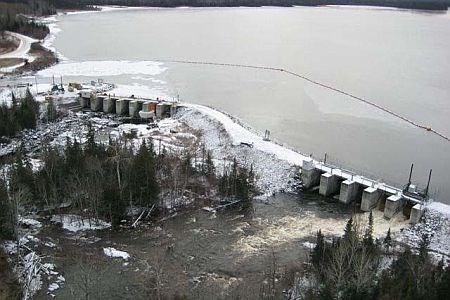The Moose Cree First Nation have hit upon the secret to true independence. The community is shaking out the final details of a landmark equity deal struck with Ontario Power Generation (OPG) as part of the province's $2.
The
Moose Cree First Nation have hit upon the secret to true independence.
The community is shaking out the final details of a landmark equity deal struck with
Ontario Power Generation (OPG) as part of the province's $2.5-billion plan to redevelop four generating stations on the Lower Mattagami River.
Located on the island of Moose Factory near the mouth of the Moose River, 300 kilometres north of Cochrane, the community negotiated a 25 per cent stake in the project, according to Fred Hunter, executive director of the Moose Cree First Nation.
Through OPG, the province intends to add 440 megawatts (MW) of power to the Kipling, Harmon, Little Long and Smokey Falls generating stations, which already provide 480 MW.
Officials with OPG have referred to this project as the potential cornerstone of the province’s renewable energy strategy.
The First Nation’s position will translate to roughly $500 million over a 50-year period, though this could potentially double if the community increases its investment. As long as the community is willing to continue purchasing larger equity stakes, “the sky’s the limit,” says Hunter.
“When you look at Aboriginal-government relations, they’re pretty disastrous, so if people don’t see that this is a model of how to do business, they got their heads in the sand,” he added.
“Ontario Power Generation was serious about working with us, and they accommodated a lot of things other people don’t want to deal with and they toughed it out at the table.
Negotiations were really tough and long, but they stuck it out, and people kept it civil and professional.”
Coming to this kind of agreement is about “shifting your mindset,” says Hunter, who takes pride in the knowledge that it was achieved without blockades or protests, but with mutual respect.
This kind of arrangement is representative of the Moose Cree’s mentality that any work or interest in its territory must be about ownership and revenue sharing, rather than a few jobs and a few dollars, says Hunter.
Not that jobs aren’t one of the anticipated benefits: the project is expected to require a 600-person camp for the five-year construction period, with timelines and general contractors still to be finalized.
The limited partnership between the Moose Cree and OPG has been named Amisk-oo-skow, which translates roughly to “an environment where there’s an abundance of beaver,” something which once characterized the area surrounding the power project.
“Before the dam came, that was the situation, and it was a very rich area,” says Hunter. “Although we can’t bring the beaver back, we want the people to benefit in the same manner as if they were still trapping on that land untouched.”
Part of this has involved building language into the agreement to make the First Nation a priority when considering additional contract work through this period. With up to $700 million in peripheral contracts expected to be made available, Hunter says the Moose Cree will likely benefit by seeking joint-venture partners to link into specific expertise.
Overall, Hunter says this will allow the community to break free of the need to rely on government handouts, something which Hunter likens to being perpetually on welfare.
He points to Ovide Mercredi, former national chief of the Assembly of First Nations, who once said such handouts which fail to sufficiently provide for housing or education only allow First Nations “to continue the management of our own misery.”
Other First Nations groups benefiting from provincial work along the Mattagami are those represented by the
Wabun Tribal Council, representing seven local First Nation communities.
With traditional lands encompassing the Upper Mattagami, the group is looking at a small influx of jobs, though executive director Shawn Batise admits the impact benefit agreement wasn’t what they had hoped. This is particularly true given its huge successes with Quebec-based
Hydromega Inc.’s 20 MW project on the Kapuskasing River, in which the Brunswick House and Chapleau Ojibwe First Nations can buy equity positions at various stages.
The 18-month construction phase on the Hydromega project is set to begin in late May or early June, and once complete, the communities’ equity position may provide them with up to $2 million in revenues per year, with the option to increase the total to $3 million after 20 years.
The successes seen by the group have led Batise to be a central speaker at the Powering Up Aboriginal Energy conference in Toronto in late April, under the topic of what it takes to get a hydro project done.
In particular, he cautions that bureaucratic red tape may choke future development efforts, and that the passage of the Green Energy Act has had little impact in speeding approvals.
Having first entered into discussions with the Quebec firm in 2004, Batise says the delays would likely have killed the project had all parties been aware as to the length of the process before it began.
